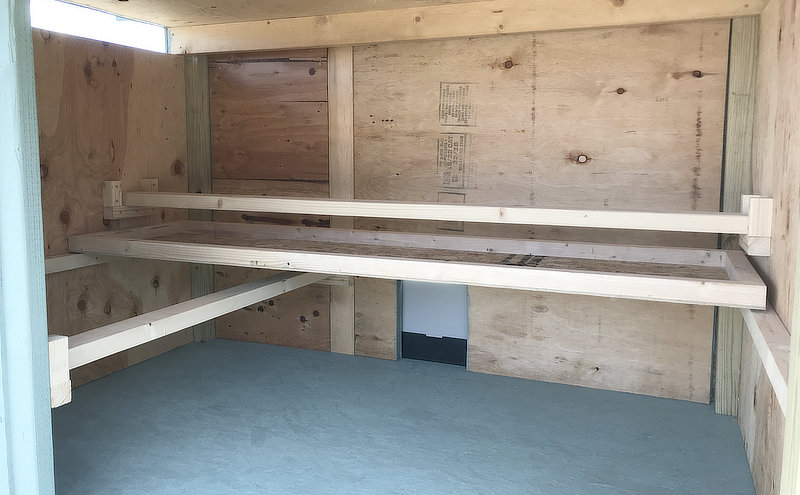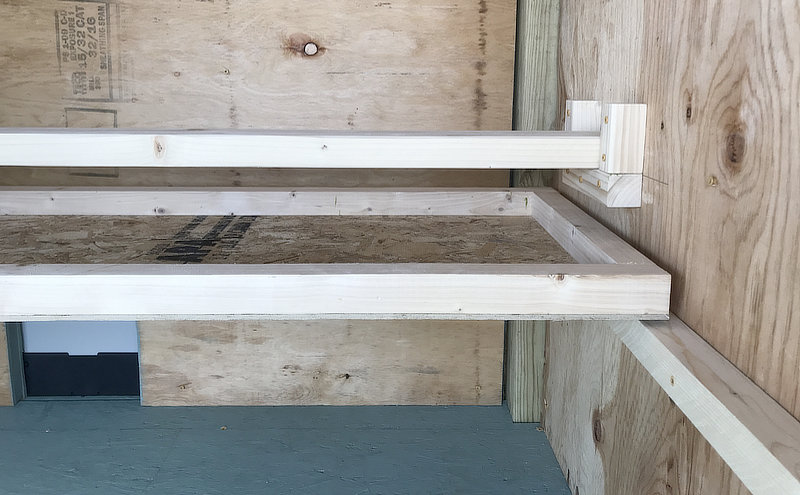Dropping Board For Chicken Coop (Poop Board)

As we all follow along with my chicken coop build. Next up is what they call a “dropping board”. Yep, that’s right, a poop board.
What is a dropping board?
It’s something that is supposed to make your life easier while dealing with what chickens do. Poop.
It’s a board that’s installed somewhere underneath their chicken roost.
About 75% of chicken poop happens while roosting at night
Therefore, instead of just letting that stuff land on the floor of the coop, on top of all that nice straw, hay, or pine shavings, lets catch it on the way down… On a dropping board.
Put sand or pine shavings in dropping board?
Either I suppose. The idea is to make cleanup easier. I’m going to try sand. This way we can use something like a kitty litter scoop to sift out the chicken poop. Otherwise if using shavings, we would simply change out the shavings when required. But sand sounds easier. We’ll see…
My dropping board design:
It’s not a big walk-in coop like many people seem to have ( re-purposed shed or whatever). Rather it has a 6′ x 4′ footprint (4′ tall). Because of this I had to keep the dropping board high enough so the birds can walk underneath it (15″ above the floor and 5″ below the roost).
I was considering shifting everything a bit higher for more headroom under the board. But too high and their heads while roosting may be too near the upper vents (breezes aren’t good for them during cold weather).
As you can see from the picture above (and the one below), I’ve set the board such that it can be slid towards the service door for easier cleanup access. Then slid back under the top roost.

Even though chickens will desire the highest roost, my concern is whether or not some birds may roost on the edge of the dropping board (pecking order?). Though I do have a lower roost as you can see in one of the photos. If some sleep on the edge of the dropping board, some of that poop is going to end up on the floor. We’ll see I guess.
Do any of you have a dropping board in your chicken coop? What method do you use?
[ Read: Chicken Coop Insulation ]
Jumbo Cat Litter Scoop (good for the sand method)
(view on amzn)
